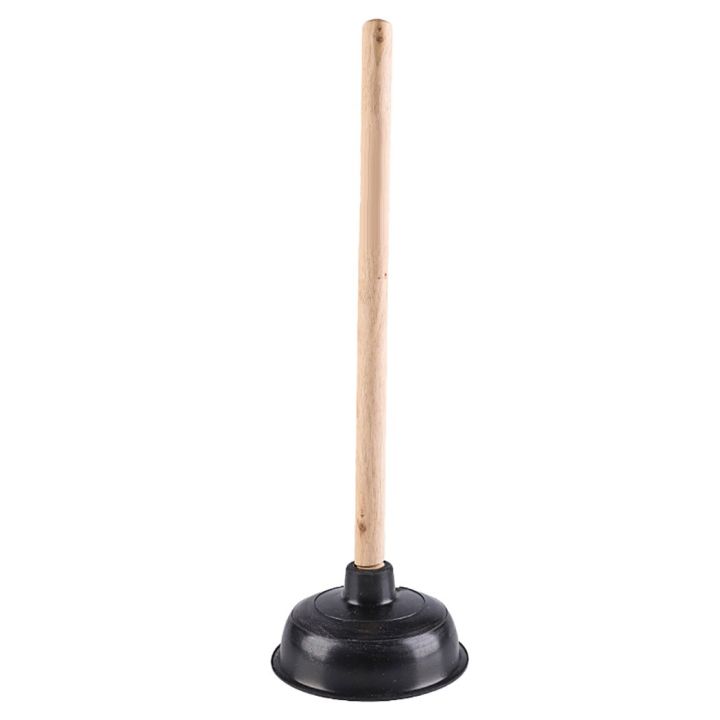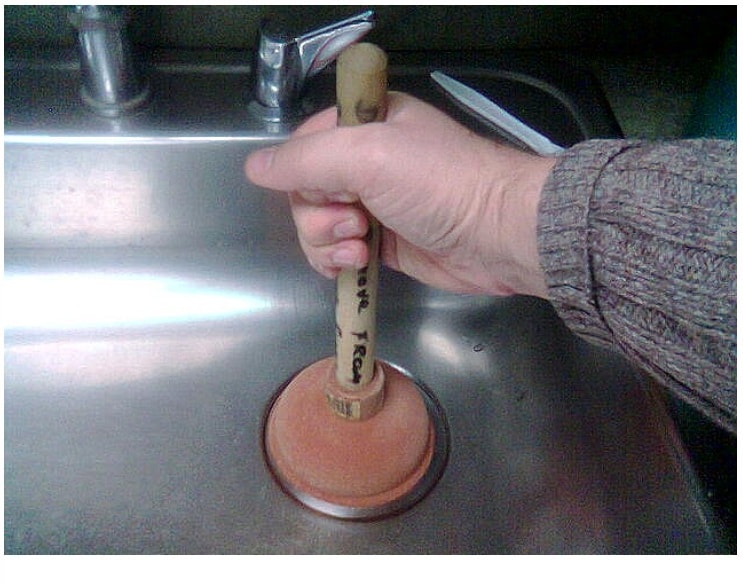Applying Plungers and Drain Cleaners: Effective Strategies
Applying Plungers and Drain Cleaners: Effective Strategies
Blog Article
Just how do you really feel with regards to Here's How to Correctly Use a Toilet Plunger?

Intro
Proper upkeep of household drains pipes is essential for protecting against clogs and making sure smooth water circulation. One of the key tools in every home owner's toolkit is the bettor, alongside different drainpipe cleansers made to take on stubborn clogs efficiently. This post discovers exactly how to make use of bettors and drainpipe cleaners successfully to keep your drains pipes streaming freely.
Section 1: Understanding Bettors
Sorts of Plungers
There are numerous kinds of plungers available, each designed for various types of drains and blocks. The most usual kinds consist of mug bettors, flange bettors, and accordion bettors.
Exactly How Plungers Job
Plungers deal with the principle of creating pressure and suction to displace obstructions. When effectively used over a drain, they create a vacuum cleaner that can take out debris or separate clogs.
Picking the Right Bettor
Picking the ideal bettor depends upon the kind of drain and the nature of the clog. Cup bettors are excellent for sinks and bathtubs, while flange bettors are better suited for commodes as a result of their style.
Common Blunders with Bettors
Preventing these mistakes makes certain efficient plunging: improper seal around the drainpipe, inadequate force, and unclear surrounding particles.
Section 2: Making Use Of Plungers Successfully
Preparation
Prior to plunging, make sure the plunger covers the drainpipe completely and develops a limited seal. Clear any type of noticeable debris around the drain opening.
Strategy
Start with mild diving movements to construct suction. Increase pressure slowly, making use of a stable rhythm. Repeat as needed till the drain removes.
Repairing Tips
If diving doesn't work, try changing the seal, using oil jelly for a far better seal, or utilizing a various type of plunger.
Area 3: Recognizing Drain Cleaning Company
Types of Drain Cleaners
Drain pipes cleaners can be chemical or enzymatic. Chemical cleaners utilize strong chemicals to dissolve clogs, while enzymatic cleaners make use of all-natural enzymes to break down raw material.
Just How Drainpipe Cleansers Work
Chemical cleansers respond with blockages to dissolve them, while enzymatic cleansers break down natural materials like hair and grease without damaging pipelines.
Security Considerations
Constantly use handwear covers and eye protection when using chemical drain cleaners. Guarantee sufficient ventilation and follow supplier directions carefully.
Eco-Friendly Alternatives
Think about making use of vinegar and cooking soda or enzyme-based cleaners for environmentally friendly alternatives that are safer for pipes and the environment.
Section 4: Making Use Of Drainpipe Cleaners Properly
Application Techniques
Pour chemical cleansers straight into the drain opening. Enable them to benefit the recommended time before flushing with hot water. Chemical cleansers need to sit overnight.
Safety measures
Prevent blending various sorts of cleansers, as this can generate poisonous fumes. Never ever use chemical cleansers along with a bettor, as splashing can happen.
Dealing With Stubborn Blockages
For consistent blockages, think about making use of a plumbing serpent or calling a specialist plumbing technician to avoid damage to pipes.
Verdict
Finally, recognizing exactly how to utilize plungers and drainpipe cleaners efficiently is important for maintaining healthy and balanced plumbing systems. By picking the right devices and techniques, home owners can deal with minor blockages and avoid significant plumbing concerns down the line.
How to Use a Plunger to Unclog a Drain
The humble plunger is a simple yet effective tool for breaking clogs in sinks, tubs and toilets. This handy tool is easy to use. You can make the most of its power if you understand how it works. Ready to dive in? Here’s what you need to know.
Safety First!
Never use a plunger with drain chemicals. Water will splash as you work, and the chemicals can spatter, burning skin and eyes. It’s a good idea to use rubber gloves and wear safety goggles when you work on a clog.
Choose the Right Tool for the Job
Plungers come in two different styles. Sinks, bathtubs and showers require a cup plunger. Like its name suggests, the rubber end is shaped like a cup. Use a flange plunger on toilets. These plungers have a rubber funnel extending from the cup. A plunger needs to be big enough to cover the drain.
Ready, Set, Plunge!
Coat the rim: Coat the plunger rim with petroleum jelly. This helps make a better seal.
Block outlets: Hold a wet rag over nearby outlets such as the overflow vent or the drain in a second sink.
Release air: Insert the plunger at an angle into the water. Water will displace air in the cup. A water-filled cup is more forceful than one filled with air.
Keep the plunger upright: Hold the plunger perpendicular to the drain. Use fast, forceful strokes, but make the first stroke gentle. The first stroke can create a splash if the cup still contains air. Thrust the plunger 15 to 20 times.
Snap off the plunger: The final stroke should be a strong upward motion that ends when the plunger snaps off the drain.
Repeat the process: you may need to repeat this sequence several times. When the water drains away, your work is done. High-five! https://plumbernw.com/blog/how-to-use-a-plunger-to-unclog-a-drain/

Application Techniques
Pour chemical cleansers straight into the drain opening. Enable them to benefit the recommended time before flushing with hot water. Chemical cleansers need to sit overnight.
Safety measures
Prevent blending various sorts of cleansers, as this can generate poisonous fumes. Never ever use chemical cleansers along with a bettor, as splashing can happen.
Dealing With Stubborn Blockages
For consistent blockages, think about making use of a plumbing serpent or calling a specialist plumbing technician to avoid damage to pipes.
Verdict
Finally, recognizing exactly how to utilize plungers and drainpipe cleaners efficiently is important for maintaining healthy and balanced plumbing systems. By picking the right devices and techniques, home owners can deal with minor blockages and avoid significant plumbing concerns down the line.
How to Use a Plunger to Unclog a Drain
The humble plunger is a simple yet effective tool for breaking clogs in sinks, tubs and toilets. This handy tool is easy to use. You can make the most of its power if you understand how it works. Ready to dive in? Here’s what you need to know.
Safety First!
Never use a plunger with drain chemicals. Water will splash as you work, and the chemicals can spatter, burning skin and eyes. It’s a good idea to use rubber gloves and wear safety goggles when you work on a clog.
Choose the Right Tool for the Job
Plungers come in two different styles. Sinks, bathtubs and showers require a cup plunger. Like its name suggests, the rubber end is shaped like a cup. Use a flange plunger on toilets. These plungers have a rubber funnel extending from the cup. A plunger needs to be big enough to cover the drain.
Ready, Set, Plunge!
Coat the rim: Coat the plunger rim with petroleum jelly. This helps make a better seal. Block outlets: Hold a wet rag over nearby outlets such as the overflow vent or the drain in a second sink. Release air: Insert the plunger at an angle into the water. Water will displace air in the cup. A water-filled cup is more forceful than one filled with air. Keep the plunger upright: Hold the plunger perpendicular to the drain. Use fast, forceful strokes, but make the first stroke gentle. The first stroke can create a splash if the cup still contains air. Thrust the plunger 15 to 20 times. Snap off the plunger: The final stroke should be a strong upward motion that ends when the plunger snaps off the drain. Repeat the process: you may need to repeat this sequence several times. When the water drains away, your work is done. High-five! https://plumbernw.com/blog/how-to-use-a-plunger-to-unclog-a-drain/

Do you really like reading about Tips on How to Effectively Use a Plunger? Try to leave a remark further down. We'd be glad to listen to your opinion about this blog posting. Hoping to see you back again later on. Liked our write-up? Please quickly share it. Help somebody else find it. I praise you for being here. Revisit us soon.
Make An Appointment Report this page